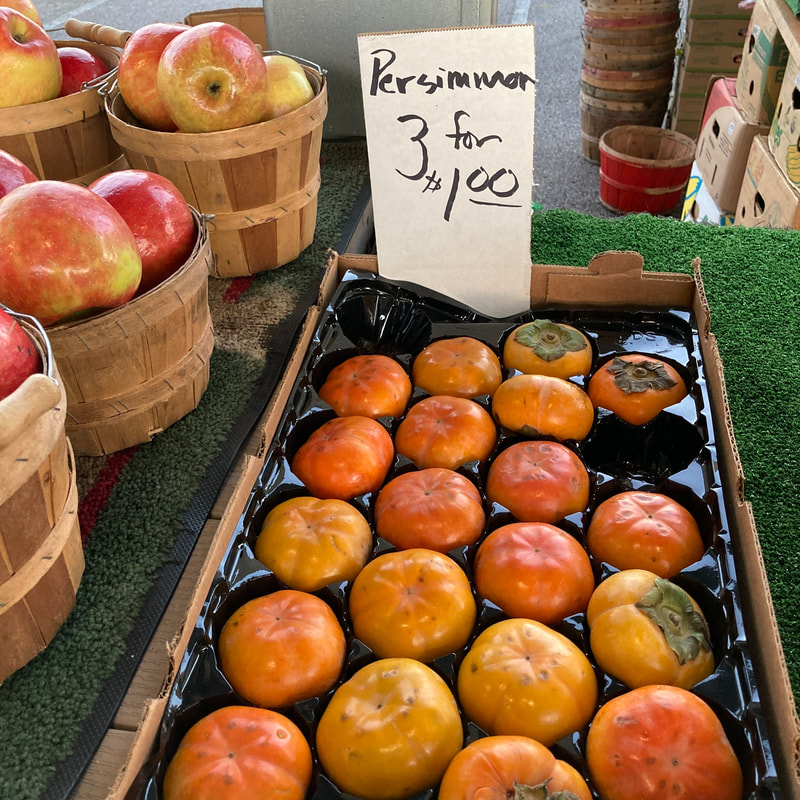|
Photo and article by Donna Iverson
What is a berry not a fruit, looks like an orange donut, and is a favorite of Midwest foragers in late fall? Persimmons. And their popularity is growing, especially in the last year when sales have doubled. Unless you are familiar with persimmons, you may not notice them on the ground when hiking in the woods or at your local farmers market. When I purchased some recently, the farmer smiled and said “someone who knows persimmons.” Actually I didn’t, but was definitely curious. A personal forager friend raved about them, so into my farmers’ market basket they went. Next I had to figure out how to eat one. Basically, there are two types of persimmons….astringent and non astringent. And how you eat them depends on which one is on your plate. You can tell them apart by shape. The astringent ones (which are native) are pear shaped while the non astringent ones look like smushed orange donuts. Mine was definitely donut shaped and thus non astringent. The label said it was imported from California, which produces 10,000 tons of persimmons a year. These California grown persimmons originated in China, where they have been cultivated for thousands of years. The non astringent persimmons are sweeter and can be eaten like an apple, skin and all. Or you can cut them and half and scoop out the pulp like you would an avocado. The jelly-like consistency has a sweet camel taste with a hint of butterscotch. Persimmons can be added to salads, baked into bread and even brewed into tea. Never eat them before they ripen as they can cause digestive problems. As a forager, I was interested in learning more about the native persimmon (Diospyros virginiana). It was first identified in 1880 in Indiana, where an annual persimmon festival is still held in the town of Mitchell every fall. As for Michigan, the persimmon tree will grow as far north as Traverse City and produce fruit but will not ripen because of the short growing season. But that may change as the climate warms. As for the persimmon tree, it grows to a height of 15 feet and looks like a large shrub. It’s wood is used to make billiard cues, bows, wood flutes and in earlier days, wooden golf clubs.
1 Comment
Anna Skoczylas
11/1/2021 12:35:11 am
Very interesting. I hadn't thought of this fruit in a long, long time. Now I will have fun to add to my knowledge as information comes my way.
Reply
Your comment will be posted after it is approved.
Leave a Reply. |
Archives
April 2024
Categories |

 RSS Feed
RSS Feed